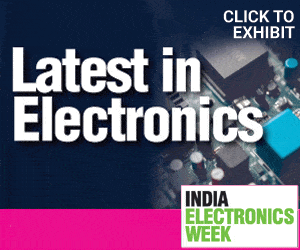Cypress Semiconductor designs and manufactures mixed-signal, programmable solutions, USB controllers as well as SRAM memories. Its USB controllers product portfolio includes the high-performance West Bridge solution that enhances connectivity and performance in multimedia handsets, PCs and tablets. The company serves numerous markets including consumer, mobile handsets, computing, data communications, automotive, industrial and military.
Badrinarayanan Kothandaraman, executive vice president, DCD administration, Cypress Semiconductor, spoke to Dilin Anand and Abhishek Mutha of EFY about challenges in designing wireless products, ways to overcome them, and working with wireless USB Bluetooth 4.0 and other exciting developments

Q. When devices are wireless, design and testing present an array of new and varied challenges to the test engineers. How do you manage these challenges?
A. First of all, there is a lot of design for testability that we need to build into the chip. We need to have built-in self-test, where the chip is capable of testing itself. Testing RF is always tricky. We also do what is called system validation testing, which is done completely prior to silicon (pre-silicon) validation.
System validation has a lot of corner cases like ‘how this chip would interface to the external world?,’ and we do it with all kinds of interference, which is called interoperability testing. Only when testing with all interference, tweaking of firmware, algorithm tuning with respect to frequency hopping and so forth are done, we are in a position to deal with it. We will not even make the chip or see silicon on the chip until we do pre-silicon validation.
But no matter what we do, the problems cited by all customers are different because it is proprietary, and there is no standardised way of designing the antenna, for example. Considering the Bluetooth low energy, it is easy to design with since it is combined in the chipset itself. But the dongle design is always tricky since everyone wants the smallest dongle. So we haven’t found many issues in routine testing on automatic test equipment but more importantly the issue is always on interoperability, which is interference and validation.
Q. How difficult is it to integrate low power, reliability and interference immunity into wireless products? What are the design challenges faced?
A. Integrating analogue and digital into the same chip is always a design challenge. Substrate noise is also a very big challenge. On the other hand, with the latest and greatest in technology, CMOS low-power RF is a possibility right now.
Consider the WirelessUSB NL chip, which consumes only about 15 milliamperes in both TX and RX communication. Power is not that much of a concern. However, interference is an important factor to be considered as there is a lot of it. To deal with it, there is a technique called ‘frequency hopping’ to move from one frequency to another. Then there is another technique called ‘direct sequence spread spectrum,’ where the transmitted signal will have a higher bandwidth in order to be more robust.
Q. Could you elaborate on wireless USB and its applications? Is there any alternative to it?
A. Wireless USB is primarily in the proprietary 2.4GHz space, which can be thought of as something similar to a wireless mouse with a dongle. We are into devices such as mice, keyboards, remote controls and even toys. These are all proprietary protocols that are not yet standardised. However, we are migrating towards what is called Bluetooth low energy (BLE).
BLE is fortunately a standard space technology, which means that the dongle would no longer be required. So what happens is that the BLE mice would directly communicate to the combo radio chip sets inside laptops (for example), thus eliminating the requirement for USB.
Q. How can design engineers incorporate wireless USB solutions into their designs? How will it help them?
A. If a design engineer wants to connect something to a PC wirelessly, all he needs to do is incorporate a couple of chips at each end. Let us consider he is transferring data through UART and wants to get work out of wireless UART. He could use an MCU to convert UART into a serial peripheral interface (SPI) and then the radio chip will take that SPI data and transmit it to a dongle at the other end, for example, that has an MCU incorporated into it. This MCU will convert the RF into USB, which can be plugged into the PC and straightaway the data will be accessible on the PC. It is very easy to add wireless connectivity to any peripheral because it’s not a standard. But note that transfer at high data rates is not feasible. That’s the limitation of this technology.






